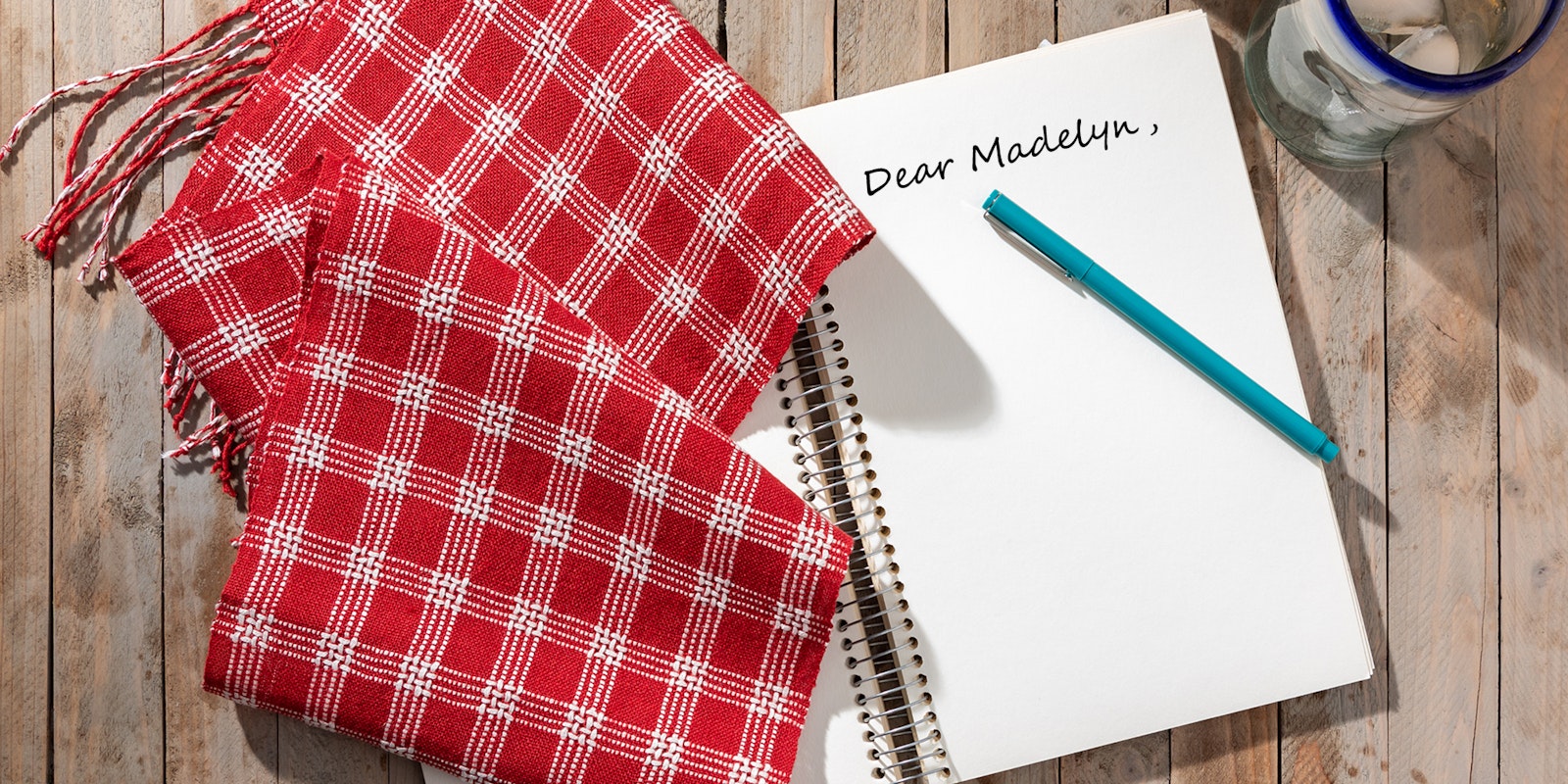Hi Madelyn!
A friend of mine uses sticks to pack the warp on the warping beam, and I’ve always used paper. I think her warps are better than mine (mine never seem to be evenly tensioned, especially on the edges). Should I be using sticks instead of paper, or what am I doing wrong?
--Sandi
Hi Sandi!
You should be able to beam an evenly tensioned warp using either paper or sticks. I use sticks, but not because they provide better warp tension. I have close to thirty looms warped at my school, and we are now putting almost 30 yards at a time on each loom. If I were to use paper, what you’d see for all those thirty yards of weaving is the paper unrolling from thirty warp beams. With sticks, no matter what length of warp remains on the loom, the warp on the warp beam looks pristine. You simply pick up the sticks after each session of weaving.
If you use paper, you want to be sure the paper is smooth. Some weavers use wallpaper remnants. Wallpaper has enough substance and comes in rolls. Corrugated cardboard works very well, though it takes up a lot of space on the beam, preventing putting on very long warps if you use it. Newspaper pages, cut up paper bags, or any paper with bumps or irregularities will cause irregularities in tension. Go for something smooth and sturdy.
With either paper or sticks, the key to even tension is beaming with high tension and making sure that the width of the warp on the beam is the same as the width of the warp in the reed. There is a tendency for the warp to spread out at the sides as it passes over the back beam onto the warp beam. I constrain the width on the back beam to slightly narrower than the warp width in the reed so that when it reaches the warp beam it is the same as the width in the reed. If it spreads out, the threads on the edges are less dense than the rest, and as the warp goes on, the paper (or sticks; the sticks do slightly bend) will bow toward the beam at the edges of the warp. You want the beamed warp to look like a perfect cylinder. (I tie a thick cord tightly around the back beam on each side of the warp and slide it next to the warp threads slightly pushing them to the desired width.)
I’m often asked how many sticks put in as I wind on. I usually put a round of corrugated cardboard on the first wrap of the warp on the beam to accommodate the knots on the apron rod. After that, I put in one or two sticks per complete revolution of the beam, one stick for each of the earlier turns, two per turn as the warp builds up on the beam.
The most important element is making sure the warp is tightly wound.
--Madelyn

